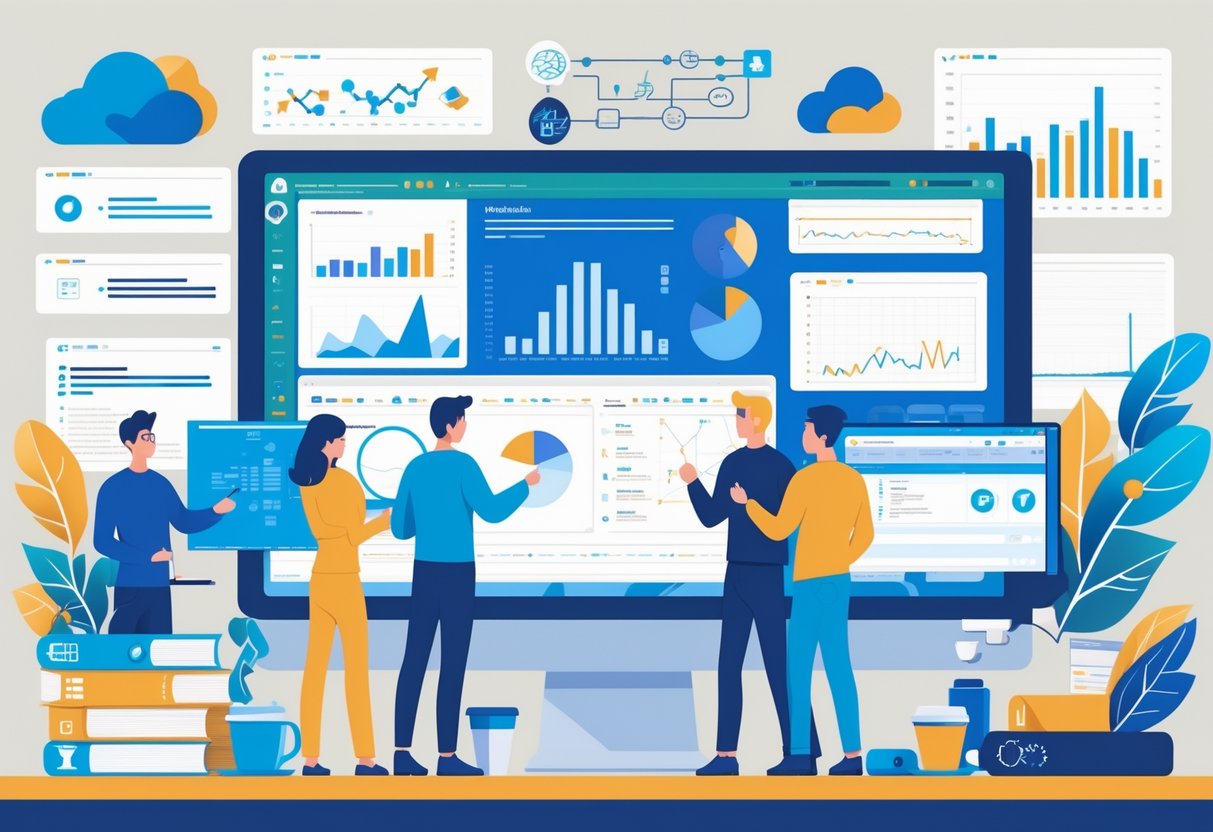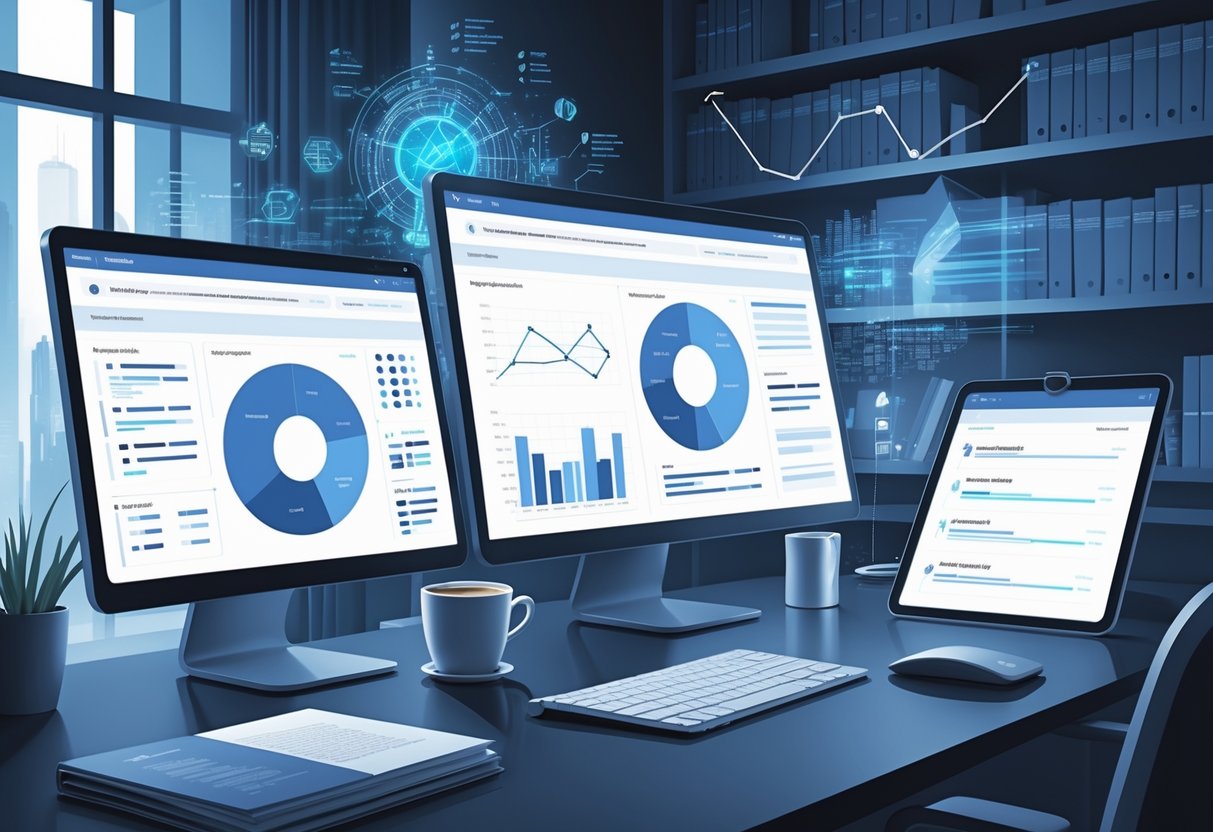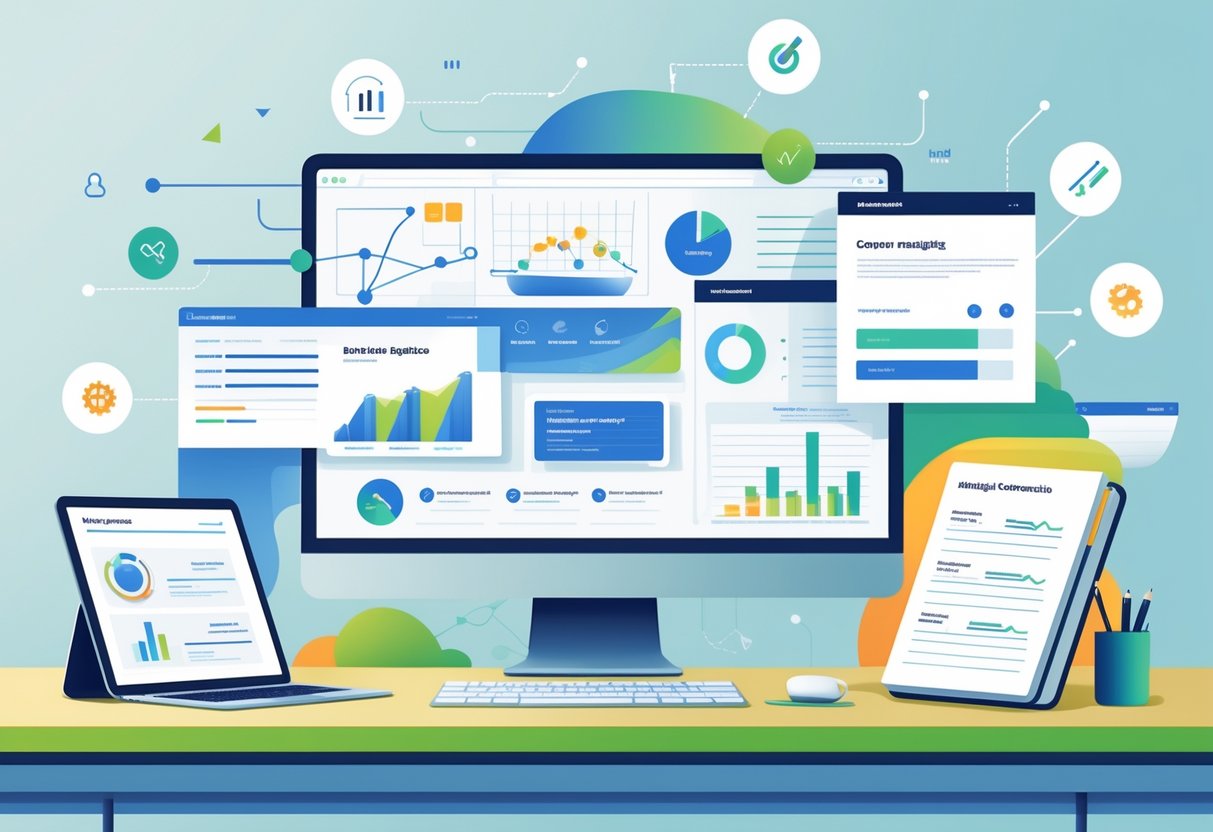Analytics engineers face unique challenges when creating resumes that showcase their hybrid technical and business skills. These professionals need to demonstrate expertise in data modeling, pipeline development, and business intelligence while proving they can translate complex data into actionable insights.

A strong analytics engineer resume combines quantifiable technical achievements with clear business impact metrics, positioning candidates as strategic data professionals who drive organizational success. The most effective resumes highlight specific tools like SQL, Python, and cloud platforms alongside measurable outcomes such as improved query performance or cost savings.
Modern hiring managers scan analytics engineer resumes for evidence of scalable solutions and cross-functional collaboration. Candidates must balance technical depth with accessibility, ensuring their resume speaks to both technical teams and business stakeholders who will evaluate their potential contributions.
Key Takeaways
- Focus on quantifiable achievements that show both technical skills and business impact
- Highlight expertise in modern data tools while emphasizing problem-solving abilities
- Structure your resume to clearly demonstrate progression from technical execution to strategic thinking
Crafting a Winning Analytics Engineer Resume

A successful analytics engineer resume requires strategic formatting, essential sections, and ATS optimization. The right structure and layout help hiring managers quickly identify relevant qualifications while ensuring automated systems can properly scan the document.
Essential Resume Sections
An analytics engineer resume must include specific sections that showcase technical expertise and professional achievements. The header should contain contact information, a professional email, and a link to a portfolio or LinkedIn profile.
The summary section highlights key accomplishments and technical skills in 2-3 sentences. This section should mention relevant tools like Python, SQL, or Tableau to catch the hiring manager’s attention immediately.
Core sections include:
- Professional experience with quantified achievements
- Technical skills section featuring programming languages and analytics tools
- Education and relevant certifications
- Projects section showcasing real-world applications
The experience section should focus on measurable results. Instead of listing basic responsibilities, candidates should emphasize how they improved processes, reduced costs, or enhanced data accuracy with specific percentages and numbers.
Reverse-Chronological Format Best Practices
The reverse-chronological format works best for analytics engineer resumes because it emphasizes recent experience and career progression. This format places the most recent position first, making it easy for hiring managers to see current skills and responsibilities.
Each job entry should include the company name, position title, employment dates, and 3-5 bullet points describing key achievements. Bullet points should start with action verbs and include specific metrics whenever possible.
Effective formatting includes:
- Consistent date formatting throughout the document
- Clear job titles and company names in bold
- Bullet points that focus on results rather than duties
- Relevant keywords from the job description
For analytics engineers with extensive experience, limiting the resume to two pages maintains readability while providing sufficient detail about technical accomplishments and project outcomes.
Creating an ATS-Friendly Layout
ATS systems scan resumes for specific keywords and formatting elements before human review. Analytics engineer resume documents must use standard section headings and avoid complex graphics or unusual fonts.
Simple, clean resume layout designs perform better in ATS systems. Using standard fonts like Arial or Calibri ensures proper text recognition. Tables and columns can confuse ATS software, so candidates should use simple formatting with clear section breaks.
ATS optimization strategies:
- Save the resume as a PDF to maintain formatting consistency
- Use standard section headings like “Experience” and “Skills”
- Include relevant keywords naturally throughout the content
- Avoid headers, footers, and text boxes that ATS cannot read
The skills section should mirror terminology from the job posting. Including both full names and abbreviations for technical tools helps ensure ATS recognition while appealing to human reviewers who may search for either format.
Showcasing Core Analytics Engineer Skills

Analytics engineers must demonstrate proficiency in SQL, Python, and data visualization tools like Tableau and Power BI. Strong database management experience with platforms like Snowflake and BigQuery, combined with ETL process knowledge and soft skills like problem-solving, creates a compelling resume profile.
Technical Skills to Highlight
Programming Languages form the foundation of analytics engineering work. SQL stands as the most critical skill for database queries and data manipulation. Python and R enable advanced statistical analysis and machine learning implementations.
Data Processing Technologies showcase an analytics engineer’s ability to handle large datasets. Apache Spark and Hadoop demonstrate big data processing capabilities. Apache Kafka and Apache Airflow highlight real-time data streaming and workflow automation expertise.
Cloud Platforms represent modern data infrastructure knowledge. Experience with BigQuery, Redshift, and Snowflake shows familiarity with scalable data warehousing solutions. These platforms handle enterprise-level data operations.
Version Control Systems like Git demonstrate collaborative development practices. Docker knowledge indicates containerization skills for deployment consistency. Linux proficiency shows command-line competency essential for data engineering tasks.
Key Data Tools and Technologies
Data Visualization Tools translate complex datasets into actionable insights. Tableau, Power BI, and Looker proficiency enables effective communication with stakeholders. These tools create dashboards and reports for decision-making.
Database Management Systems encompass both traditional and modern platforms. MySQL, Oracle, and SQL Server represent relational database expertise. NoSQL knowledge complements structured data skills.
Analytics Libraries enhance programming capabilities. NumPy and Pandas in Python streamline data manipulation tasks. These libraries accelerate data processing workflows significantly.
ETL and Data Pipeline Tools demonstrate data integration expertise. Experience with data build tool (dbt) and custom ETL processes shows technical depth. These skills ensure reliable data flow from source to analysis.
Soft Skills for Analytics Engineers
Problem-Solving Abilities enable analytics engineers to translate business requirements into technical solutions. They identify data quality issues and develop systematic approaches to complex analytical challenges.
Communication Skills bridge technical and business teams effectively. Analytics engineers explain complex findings to non-technical stakeholders. They collaborate with data scientists, software engineers, and business analysts regularly.
Attention to Detail ensures data accuracy and reliability. Small errors in data processing can lead to significant business impact. Meticulous validation and testing practices maintain data integrity.
Project Management capabilities help coordinate multiple initiatives simultaneously. Analytics engineers often manage competing priorities and deadlines. They balance technical debt with new feature development efficiently.
Highlighting Impactful Experience and Achievements

Your work experience section must demonstrate concrete results and measurable impact rather than listing basic job duties. Focus on data-driven solutions that improved business outcomes and showcase your ability to work with cross-functional teams to solve complex problems.
Work Experience Section Tips
Structure each role using the task-action-result format to show clear impact. Start with your most recent position and work backward chronologically.
Focus on responsibilities that directly relate to data analysis and data-driven decision-making. Avoid listing every task you performed.
Key elements to include:
- Specific tools and technologies used
- Types of data analysis performed
- Business problems solved
- Team size and collaboration scope
Limit each role to 4-6 bullet points maximum. This forces you to choose only your most impactful achievements.
Use strong action verbs like “developed,” “implemented,” “optimized,” and “collaborated.” These words show you took initiative rather than just followed instructions.
Making Achievements Quantifiable
Numbers make your impact clear and memorable. Quantify improvements in process efficiency you achieved and show measurable business results.
Effective metrics include:
- Percentage improvements in data accuracy or data quality
- Cost savings or revenue increases
- Processing time reductions
- Team size managed or trained
- Database sizes handled
Replace vague statements with specific numbers. Instead of “improved data quality,” write “improved data accuracy by 30% through implementing automated validation processes.”
Financial impact carries significant weight with hiring managers. Show how your analytics work contributed to revenue growth or cost reduction.
Track your accomplishments throughout your career. Keep records of project outcomes to reference when updating your resume.
Emphasizing Problem-Solving and Data-Driven Results
Demonstrate your problem-solving skills by explaining challenges you faced and solutions you implemented. Show how you translated business problems into analytical frameworks.
Highlight projects where you identified data integrity issues and fixed them. This shows attention to detail and technical competence.
Problem-solving examples:
- Fraud detection systems that reduced losses
- Predictive models that improved forecasting accuracy
- Data pipelines that eliminated processing bottlenecks
- Automated reporting that saved manual effort
Connect your technical work to business outcomes. Explain how your data analysis led to better decision-making across the organization.
Show adaptability by describing how you handled changing requirements or tight deadlines. This demonstrates resilience under pressure.
Collaboration and Cross-Functional Projects
Analytics engineers rarely work alone. Emphasize your experience working with cross-functional teams including data scientists, business stakeholders, and technical teams.
Describe projects where you translated complex technical concepts for non-technical audiences. This shows strong communication skills.
Collaboration highlights:
- Projects spanning multiple departments
- Training provided to team members
- Stakeholder requirements gathering
- Technical documentation created
Show project management experience by mentioning timelines, deliverables, and coordination responsibilities. This demonstrates leadership potential.
Highlight instances where you influenced data-driven decision making across the organization. This shows your work had broad business impact beyond just technical implementation.
Education, Certifications, and Professional Development

Strong educational credentials combined with relevant certifications demonstrate technical competency and commitment to professional growth. Continuous learning through courses, workshops, and self-directed study shows employers that candidates stay current with evolving analytics technologies and methodologies.
Relevant Degrees and Coursework
A bachelor’s degree in computer science, statistics, mathematics, or engineering provides the foundational knowledge analytics engineers need. These programs cover essential topics like data structures, algorithms, and statistical methods.
Master’s degrees in data science or analytics offer deeper specialization. Coursework in machine learning algorithms, statistical analysis, and data modeling directly applies to daily responsibilities.
Candidates should highlight specific courses that align with job requirements:
- Database systems and SQL programming
- Predictive modeling and forecasting methods
- Exploratory data analysis techniques
- Programming languages like Python and R
Portfolio projects from academic work demonstrate practical application of theoretical concepts. Students often complete capstone projects involving real datasets and business problems.
Even candidates with unrelated degrees can transition into analytics roles. Self-taught skills combined with bootcamp education or online certifications can compensate for non-technical backgrounds.
Certifications Valued by Employers
Industry certifications validate technical skills and knowledge of specific tools. Cloud platform certifications from AWS, Google Cloud, or Microsoft Azure show expertise in modern data infrastructure.
Popular analytics certifications include:
| Certification | Focus Area | Provider |
|---|---|---|
| Google Analytics Individual Qualification | Web analytics | |
| Tableau Desktop Specialist | Data visualization | Tableau |
| AWS Certified Data Analytics | Cloud data platforms | Amazon |
| Microsoft Azure Data Engineer | Azure data services | Microsoft |
Tool-specific certifications in Tableau, Power BI, or Looker demonstrate visualization expertise. These credentials often require hands-on experience with real projects.
Statistical analysis certifications from SAS or SPSS (IBM) validate advanced analytical capabilities. Machine learning credentials from Coursera or edX show expertise in predictive analytics.
Certifications in agile methodologies highlight project management skills. Many analytics teams use agile frameworks for iterative development.
Showcasing Ongoing Learning
Continuous learning demonstrates adaptability in the rapidly evolving analytics field. Candidates should document recent courses, workshops, and self-directed learning initiatives.
Professional development activities include:
- Attending industry conferences and workshops
- Participating in online communities and forums
- Contributing to open-source analytics projects
- Publishing articles or blog posts about data analytics engineer topics
Data scientist and data engineer professionals often cross-train in related areas. Learning complementary skills expands career opportunities and adds value to employers.
Candidates should maintain a learning log or portfolio documenting new skills acquired. This evidence supports claims about professional growth and technical development.
Recent certifications carry more weight than older credentials. Technology evolves quickly, so current learning demonstrates relevant expertise.
Advanced Topics and Emerging Trends

Modern analytics engineers must master cloud-native data platforms, real-time processing systems, and advanced ETL workflows to stay competitive. Success requires translating complex data insights into clear business narratives that drive strategic decisions.
Big Data and Cloud Platforms Experience
Analytics engineers need hands-on experience with major cloud platforms like AWS, Google Cloud, and Azure. These platforms offer managed services that simplify data warehousing and big data technologies deployment.
Hadoop ecosystem knowledge remains valuable for large-scale data processing. Engineers should understand MapReduce, HDFS, and Spark for distributed computing tasks.
Cloud-native tools provide scalable solutions for data infrastructure. BigQuery, Redshift, and Snowflake handle petabyte-scale analytics workloads efficiently.
| Platform | Key Services | Primary Use Case |
|---|---|---|
| AWS | Redshift, EMR, Glue | Enterprise data warehousing |
| Google Cloud | BigQuery, Dataflow | Real-time analytics |
| Azure | Synapse, Data Factory | Hybrid cloud integration |
Container technologies like Docker and Kubernetes enable portable data applications. Engineers should understand how to deploy analytics workloads across different environments.
Multi-cloud strategies require understanding data transfer costs and latency considerations. Engineers must optimize for performance while managing expenses.
Modern Data Infrastructure and ETL Workflows
ETL processes have evolved into more flexible data pipelines that handle streaming and batch processing. Modern workflows emphasize automation and data quality assurance throughout the pipeline.
Data integration tools like Apache Airflow, Prefect, and dbt enable complex workflow orchestration. These platforms provide monitoring, error handling, and dependency management capabilities.
Data cleaning automation reduces manual intervention and improves consistency. Engineers should implement validation rules and anomaly detection at multiple pipeline stages.
Version control for data transformations ensures reproducibility and collaboration. Git-based workflows allow teams to track changes and roll back problematic updates.
Schema evolution management handles changing data structures without breaking downstream processes. Engineers must design flexible pipelines that adapt to new requirements.
Data governance frameworks establish clear ownership and access controls. Implementing data lineage tracking helps teams understand data flow and impact analysis.
Real-Time Analytics and BI Tools
Real-time analytics capabilities enable immediate business responses to changing conditions. Streaming platforms like Kafka and Kinesis process millions of events per second.
Business intelligence tools have evolved beyond traditional reporting dashboards. Modern platforms offer self-service analytics and automated insight generation.
Interactive visualization tools like Tableau, Power BI, and Looker democratize data access across organizations. Engineers should understand how to optimize data models for these platforms.
Customer segmentation algorithms run continuously on streaming data to update targeting strategies. Real-time personalization requires low-latency data processing architectures.
Event-driven architectures trigger analytics workflows based on business events. This approach reduces processing delays and improves system responsiveness.
In-memory computing platforms accelerate complex analytical queries. Tools like Apache Ignite and Redis enable sub-second response times for interactive applications.
Business Impact and Analytical Storytelling
Analytics engineers must translate technical capabilities into measurable business outcomes. Data reporting should focus on actionable insights rather than raw metrics.
Stakeholder communication requires adapting technical concepts for different audiences. Executive dashboards emphasize key performance indicators and trend analysis.
A/B testing frameworks validate analytical recommendations through controlled experiments. Engineers should understand statistical significance and experiment design principles.
Cost-benefit analysis justifies infrastructure investments and tool selections. Demonstrating ROI helps secure resources for advanced analytics initiatives.
Cross-functional collaboration improves analytical solution adoption. Engineers should work closely with product managers, marketers, and executives to understand business context.
Data storytelling techniques make complex analyses accessible to non-technical stakeholders. Visual narratives and clear explanations drive better decision-making across organizations.
Frequently Asked Questions

Analytics engineers face unique challenges when crafting resumes that showcase both technical expertise and business impact. Key considerations include highlighting data pipeline experience, quantifying achievements with specific metrics, and demonstrating proficiency in modern data tools.
What are the essential components to include in an analytics engineer resume?
An analytics engineer resume should lead with a professional summary that emphasizes years of experience and core technical skills. The summary must include specific metrics showing business impact and data processing improvements.
Work experience forms the backbone of the resume. Each role should highlight concrete achievements like pipeline optimization, query performance improvements, and data quality enhancements.
Technical skills deserve prominent placement. Essential areas include data modeling, SQL expertise, ETL/ELT tools, cloud platforms, and programming languages like Python or R.
Education and certifications round out the essential components. Relevant degrees in computer science, data science, or engineering provide credibility. Industry certifications in cloud platforms or data tools strengthen technical credentials.
How can I tailor my analytics engineer resume to highlight my data engineering skills?
Data engineering skills require specific emphasis through concrete project examples. Candidates should showcase experience building scalable data pipelines using tools like Apache Airflow, Kafka, or Spark.
Pipeline architecture deserves detailed attention. Resumes should describe the scale of data processed, performance improvements achieved, and reliability metrics maintained.
Database expertise needs clear demonstration. This includes experience with data warehouses like Snowflake or BigQuery, along with optimization techniques that reduced query times or storage costs.
Real-time processing capabilities set candidates apart. Experience with streaming data, event-driven architectures, and low-latency systems appeals to modern employers seeking advanced technical skills.
What are some effective tips for formatting an analytics engineer resume for maximum impact?
Clean, professional formatting ensures readability across applicant tracking systems and human reviewers. Standard fonts like Arial or Calibri work best with consistent spacing and clear section headers.
Bullet points should start with strong action verbs like “Built,” “Optimized,” or “Implemented.” Each bullet must include specific metrics showing percentage improvements or dollar amounts saved.
White space enhances readability. Dense blocks of text overwhelm recruiters who scan resumes quickly. Short paragraphs and strategic spacing guide the eye to key information.
Length should stay within one to two pages maximum. Senior professionals with extensive experience may justify two pages, but most analytics engineers should condense their achievements into a single page.
Can you suggest any professional templates suitable for an analytics engineer resume?
Analytics engineer resume templates provide structured formats emphasizing technical skills and quantified achievements. Professional templates balance visual appeal with ATS compatibility.
Clean, modern designs work best for technical roles. Templates should feature clear section divisions, consistent formatting, and adequate white space for easy scanning.
ATS-friendly formats remain crucial. Templates must use standard fonts, avoid complex graphics, and structure information in ways that automated systems can parse correctly.
Customizable sections allow personalization. Good templates let users modify skill sections, project highlights, and formatting elements to match specific job requirements.
We provide templates for analytics engineering resumes within our course. Enroll to access.
What experiences and projects should I feature in my analytics engineer resume to stand out?
Data pipeline projects demonstrate core competencies. Candidates should highlight pipelines they built from scratch, including data sources integrated, processing volumes handled, and performance metrics achieved. Explore practice exercises and premium projects for inspiration and hands-on experience.
Cross-functional collaboration showcases business value. Projects involving data scientists, product managers, or business stakeholders prove the ability to translate technical work into business outcomes.
Automation initiatives appeal to efficiency-focused employers. Examples include automated data quality checks, monitoring systems, or deployment processes that reduced manual work.
Migration projects show adaptability. Moving from legacy systems to modern cloud platforms or updating architectures demonstrates technical leadership and change management skills.
How should I showcase my technical proficiencies on my analytics engineer resume?
Technical skills should appear in a dedicated section with clear categorization. Group related technologies together, such as programming languages, databases, cloud platforms, and analytics tools.
Experience levels matter for each technology. Candidates can indicate proficiency through years of experience, project complexity, or certification status rather than subjective skill ratings.
Context enhances technical listings. Brief descriptions of how specific tools were used in projects provide more value than simple technology lists without application details. You can demonstrate your skills by referencing completed projects or exercises, such as those available in our premium projects and practice exercises sections.
Modern technologies deserve emphasis. Current tools like dbt, Databricks, or container orchestration platforms show alignment with industry trends and emerging best practices. For more on industry-leading tools and certifications, refer to reputable resources such as Google Cloud Training or AWS Certification.




